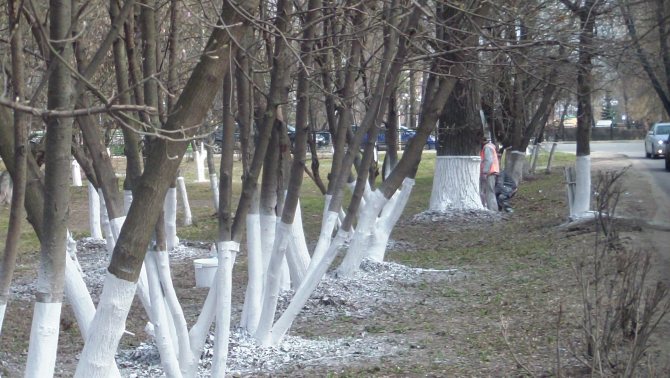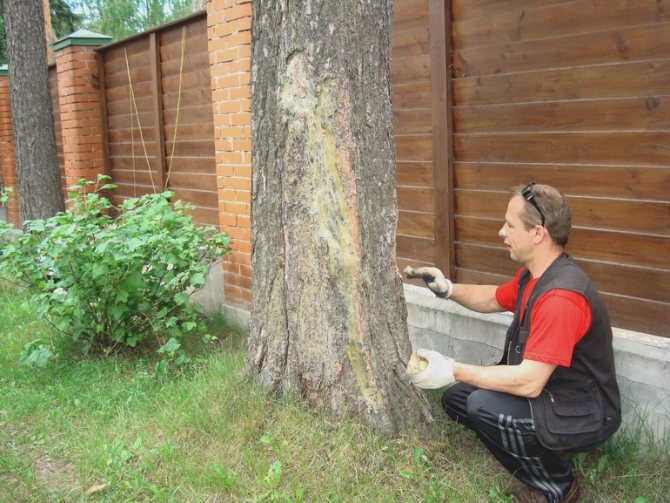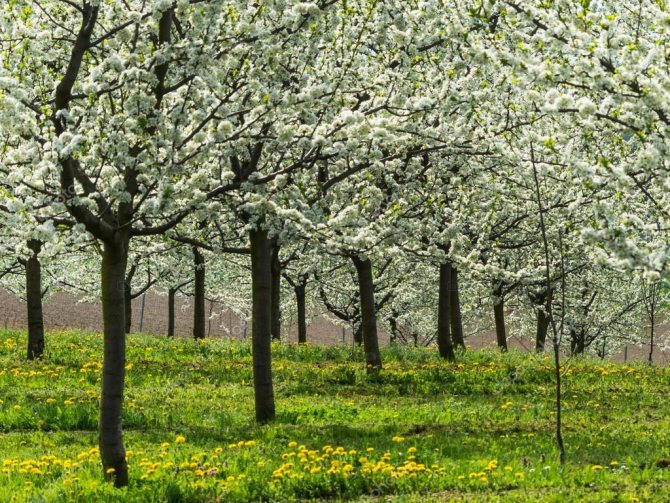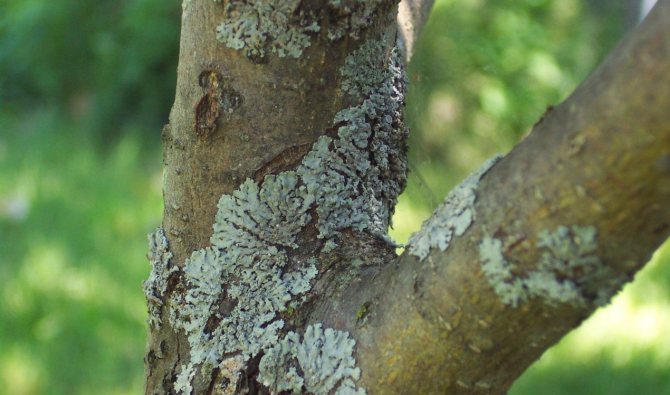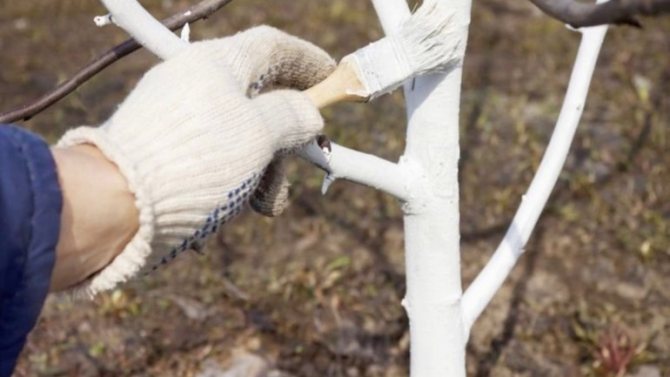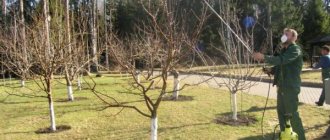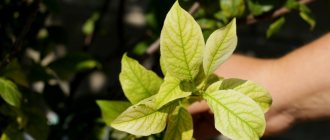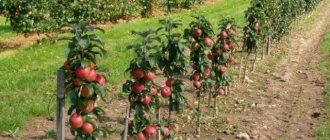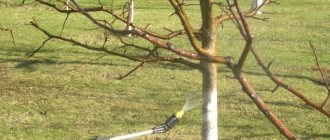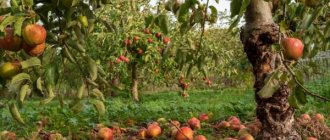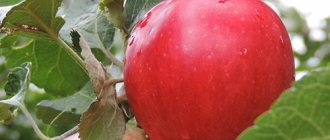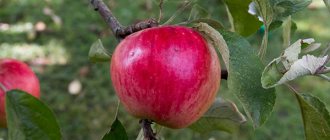The appearance of cracks in the bark always causes great concern for many summer residents. If you do not take the necessary measures in time, then the tree may not only deteriorate the quantity and quality of the harvest, but the life of the tree itself will also be in jeopardy. The disease can spread to other trees growing in the area. Moreover, the infection can spread throughout the garden in a very short period of time, causing great harm to the trees. After reading this article, you can find out what are the reasons for the occurrence of cracks of various kinds on trees, how this can be avoided and how to deal with such a situation. So, what to do if the apple tree bark is cracked.
What harm can rodents do on the site

Most often, mice appear on the site in late autumn and winter. With the onset of cold weather, mice can appear in summer cottages in search of food, the reserves of which are running out by winter. Their favorite food is apple bark because it doesn't taste bitter like other fruit trees. Mice, hares, rabbits can destroy all the seedlings in the garden in one season. Most often, mice, hares gnaw the bark of young seedlings, since their bark is softer.
Field mice have small teeth, so they can only gnaw through the top layer of the bark. A massive invasion of mice can damage the cambial layer, which is located between the bark and the core of the trunk. Hares almost always gnaw an apple tree to cambium. The layer under the bark is responsible for carrying nutrients, water, if it is damaged, the development of the tree is disturbed, and the yield decreases. If the cambium is 80% damaged, the tree cannot be restored.
The bark is the protective shell of the tree that protects its interior. Its damage is the gateway to bacterial and fungal infections. If only the bark is damaged, it is much easier to repair the tree. Pests often attack trees in winter, they burrow holes in the snow and feed on the part of the apple tree that is under the snow, including the roots. Therefore, damage from rodents is detected after the snow melts.
If the rodents ate roots in winter, then in early spring you can see that the seedling bent to its side. If the root system is damaged by 80% or more, the tree will not be able to stay in the soil and will collapse. It is no longer possible to restore it. If the roots are eaten by half, the amount of substances from the soil for the development of the tree is reduced, which affects the condition of the branches, leaves, and the future harvest, which may not be available. You can treat the apple tree as soon as the frosts stop, until that time the place of damage can be covered with garden varnish, wrapped with plastic wrap
Important! The stronger the annular damage to the apple tree, the less likely it is to save the seedling.
Prevention of cracking
Whitewashing trees
Whitewashing is used to prevent the formation of cracks in garden trees. When whitewashing, you need to observe the concentration of lime.
For the treatment of young trees, a solution of a lower concentration is used than for whitewashing older trees.
Whitewashing of tree trunks should be done twice a year - in spring and autumn. Autumn whitewashing is much more important for fruit trees.
Protection against frost and sunburn
In order to prevent the appearance of cracks from frost and sunburn, tree strapping is effectively used to insulate them.
Most gardeners use newsprint for this, it protects from the wind and reflects the sun's rays.
Some summer residents and gardeners use nonwoven fabric for these purposes - spunbond or lutrasil.
Furrowing trees
To prevent the appearance of cracks in early summer, a furrow procedure is performed.
For this, longitudinal, intermittent cuts are made with a well-disinfected knife to a depth of 1 or 2 millimeters from the northern side of the trunk, starting from the crown of the tree to the roots.
For the first time after planting, such a procedure is done when the tree reaches four years of age, after which it is repeated once every five years.
Rodent prevention
To prevent damage to fruit trees by rodents, they are used to tie trees with roofing material.
Sometimes they use a coating that scares off rodents - a mixture of an equal amount of cow dung and clay with the addition of carbolic acid - one tablespoon per bucket.
If preventive measures are taken, the likelihood of bark cracking on fruit trees is significantly reduced.
How can a tree with damaged bark be saved?
The choice of the method of treatment, restoration of the apple tree depends on the degree of damage to the seedling. If the mice have gnawed a small section of the bark without damaging the cambium, you can apply medicated dressings. If the trunk of the tree is badly damaged, the movement of sap is disturbed, grafting, reverse growth, engraftment can help.
Applying medical dressings
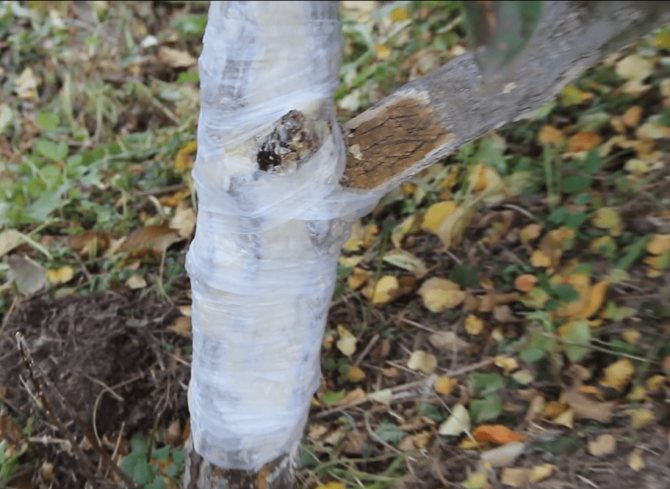

Using this method, you can save the trunk of a young apple tree with minor damage to the bark, if mice or hares damaged only the top layer and did not reach the cambium. You can restore the bark of an apple tree before it dries; after that, medical dressings will not help. There is a lot of treatment with bandages. The most popular are five.
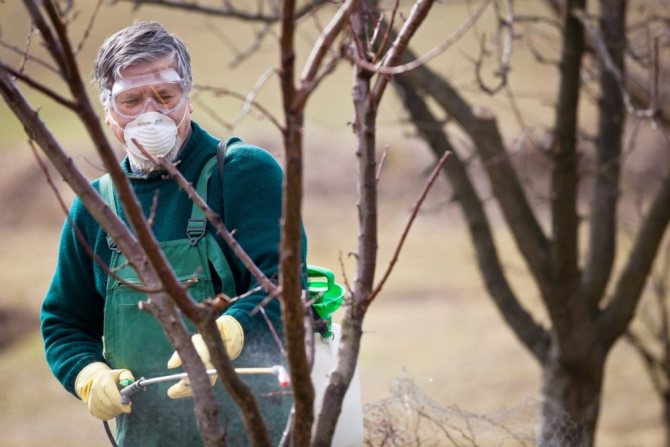

Diseases of fruit trees
Diseases of trees can cause big trouble for the gardener. Two main groups can be distinguished:
- diseases caused by phytopathogenic fungi;
- diseases caused by bacteria;
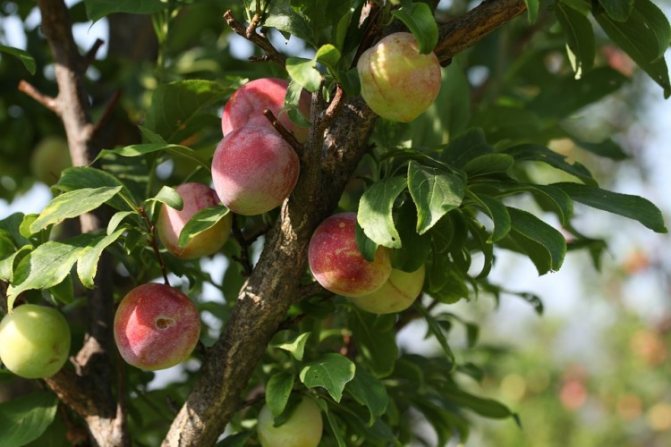

Fruit trees
Penetrating through damaged tree tissues or "stomata", which provide the tree with respiration, parasites cause significant damage to the plant, up to its death. In order to successfully fight a threat, you need to “know it by sight”. It will not be difficult for an experienced gardener to recognize diseases of fruit trees and choose the right treatment tactics.
How to properly cut cuttings for grafting with a bridge
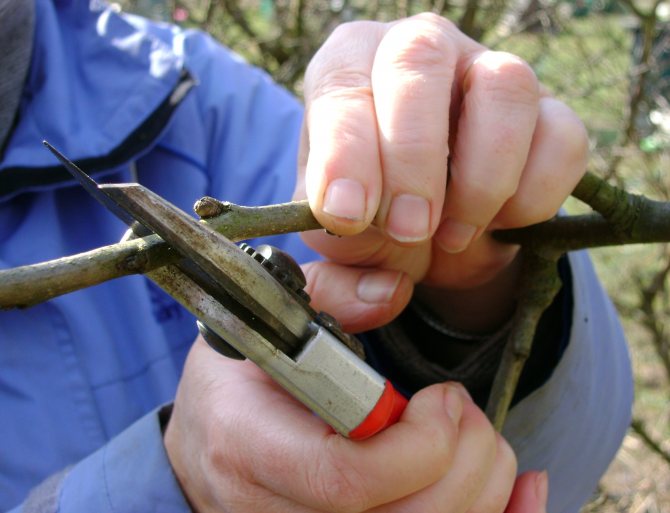

The graft is taken from healthy trees that do not have signs of diseases, damage. In the advantage are seedlings that have already borne fruit. If there are no such trees, you can cut a branch from the apple tree itself. In the fall, the scion is harvested until the leaves fall, until frost begins, or in the spring, until the buds swell. In cuttings cut in the fall, the speed of the sap is reduced, their buds are in a dormant state, until spring they are activated.
For cutting the material, it is better to choose branches growing from the sunny side in the middle of the crown. The stalk should be smooth, with smooth, healthy bark and a few well-formed (not deformed) buds. The length of the scion is about 25 cm, the thickness is about 6 mm. You can only cut a branch with a sharp knife to get an even cut. The cut angle is oblique so that you can insert it between the bark and the wood during splicing.
How to store cuttings for grafting
The graft must be harvested with a margin, since part of it may die during storage. There are many ways to store both outdoors and at home. On the street, material is often stored in the ground. To do this, dig a hole about 15 cm deep, fill it halfway with dry sawdust, fold the scion, sprinkle it with a wet layer of sawdust.After the first frost, the top layer will freeze, after which it must be sprinkled with another dry layer, about 25 cm thick, covered with polyethylene material.
If there is snow cover in the region of residence in winter, you can store the scion in another way. They dig a hole about 25 cm deep, put spruce branches on the bottom, then cuttings and spruce legs again. Top covered with soil or sawdust. You can mix the soil in half with sawdust. If you cannot store the cuttings outside, you can put them in the refrigerator, wrap them with a wet cloth and put them in a bag. In no case should they be put in the freezer - they will freeze and die.
If you have a cellar at home, you can store the scion in pots or wooden boxes. Any container is covered with a bag with holes in the bottom, half filled with wet sand or sawdust. Cuttings are inserted with the cut part down. Sand or sawdust is poured to the edges of the container. When stored in a cellar, cuttings can deteriorate if the temperature and humidity are not observed. The optimum temperature is from 0 ° to + 2 ° C, humidity is from 55 to 70%.
What to do if mice gnaw not only the bark of the apple tree, but also the roots
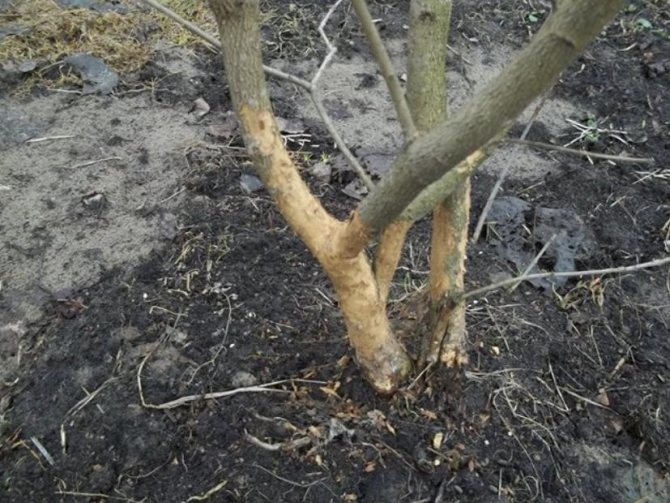

Mice spoil the roots of seedlings most often in winter, as they break through the tunnels under the snow. If the root system is badly damaged, a young tree in spring can not only begin to dry out, but also bend to the side. If the tree has bent, it is no longer possible to restore it. If the tree is level and part of the root system is preserved, you can try to restore it.
In early spring, as soon as the snow melts and the frosts recede, the roots of the apple tree are exposed. The damaged areas are treated with a special Heteroauxin solution. It is a growth stimulant that accelerates the healing process and the restoration of the root system. You can buy it at any specialty store. After processing, sprinkle with wood ash on top.
The roots are covered with soil, which is mixed with ash and superphosphate. The soil is compacted to secure the tree, it is tied to a peg. To take the load off the trunk, you need to cut about 70% of the side branches. Also, a large crown of an apple tree takes a lot of nutrients, moisture for the formation of buds, leaves, and pouring fruits. If you cut them off, the root system will recover faster.
Important!
After root treatment, the soil should be checked for mouse holes to prevent pests from chewing on the roots again.
Black cancer
Branches blackened as if covered with soot. These are the first signs of the so-called black cancer - the most dangerous disease of apple trees.
Black cancer most often begins at the forks of skeletal branches. First, reddish-brown depressed spots form on the affected area, which then darken. Due to the numerous black tubercles appearing on the bark - pycnidia with fungal spores, the bark in this place resembles a slightly lumpy goose bump. The tubercles are smaller here than in cytosporosis. Usually at this stage, gardeners do not notice that the apple tree is sick. This is a big mistake, because at this stage the disease is easier to treat. In the future, the bark gradually cracks, as if charred and exfoliated. Over time, it falls off, exposing the blackened wood.
Falling off blackened bark is an undoubted symptom of this disease. The disease covers more and more areas, they expand, encircle skeletal branches with a ring of dead tissue, causing their death. When the stem is affected, the tree dries up in 1-3 years from the moment the first symptoms appear. That is, this disease is deadly for apple trees. People call him "Antonov fire". Having found such a disease in your garden, you need to immediately quit all business and start treatment, regardless of whether sap is flowing in the apple trees or not. It is urgent to stop the occupation of healthy tissues by the disease, because the disease is spreading at a high speed.
With this disease, not only the cortex suffers. Dark brown spots with black dots appear on the leaves, the leaves fall off. The affected fruits are first covered with brown spots, as in moniliosis, then shriveled, dry up, turn brown or blacken from tubercles with spores and hang on the apple tree for a long time, infecting everything around.
Experts believe that black cancer is a disease of weakened apple trees. In strong trees, self-healing of wounds is sometimes observed.
In recent years, the disease has spread strongly in our gardens, capturing new territories at great speed. There are several points of view on the causes of its occurrence. For example, poisoning a tree with fresh organic matter. However, my apple trees, for example, do not see fresh organic matter. However, they have black cancer. It is believed that the disease provokes a lack of certain nutrients. Therefore, it is recommended to apply magnesium boron fertilizers to the soil before flowering. Some scientists believe that apple trees on vigorous rootstocks are more resistant to black crayfish than apple trees on dwarf ones. Perhaps the massive spread of this disease in recent years is due to the special popularity of apple trees on dwarf rootstocks.
So, walking through the garden, you discovered the symptoms of diseases of the bark of your pets. Without putting it on the back burner, you need to start treatment. Early spring is the best time for this. In most cases, there are chances to save the apple tree.
Making a garden varnish for damage putty
For the treatment of wounds on apple trees and other fruit trees, garden var is used. They can also process the adhesion sites during vaccinations. The putty is an environmentally friendly product. You can buy it ready-made or cook it yourself. There are many ways to cook var. Experienced gardeners recommend using Zhukovsky or Pashkevich's var. The first putty contains 3 components: wax, rosin, mutton fat. Most often, all components are taken in the same amount, but wax can be taken twice as much.
Wax closes cracks and protects them from moisture and pathogenic flora. Due to the fat, the composition on the trunk does not crack. Rosin makes the composition sticky so that it is firmly fixed on the bark. For cooking, all components are melted in separate containers over low heat or in a steam bath. While hot they are mixed together and poured into cold water. The mixture does not sink, but floats on its surface. The putty is collected from the water and rolled into a ball. It kneads very easily, its consistency is similar to plasticine. The putty is stored in a dark place wrapped in oiled paper. During storage, the var hardens a little, before use it is heated until soft.
Var Pashkevich contains 4 components:
- rosin - 2 parts;
- yellow wax - 4 parts;
- turpentine - 4 parts;
- rendered fat - 1 part.
First, melt the wax, then add rosin, turpentine, stir until smooth. Melted fat is added last. The composition is poured into a container with cold water, collected in one lump. Store, like Zhukovsky's var. Before using the garden varnish, the damaged area is cleaned, it can be additionally treated with copper sulfate. After applying the mixture, the section of the trunk is wrapped with a natural cloth.
Important!
Instead of garden varnish, you can treat the trunk with biobalms, which are sold in specialized stores, instructions for use are indicated on the packaging.
Causes and signs of detachment
The cause may be fungal diseases that can be recognized early and the plant can be saved.
Cytosporosis
The disease appears on weakened plants. Reasons for weakness:
- non-compliance with irrigation regimes;
- poor soil;
- improper feeding;
- mechanical damage.
The disease manifests itself in the form of brown-red ulcers, which are initially characterized by a slight darkening.In a short time, ulcers cover a large area of the cortex, while deforming the surface. The bark moves away from the trunk, and the dying branches break off.
Fungal disease leads to the rapid death of the plant. After a maximum of 2 seasons, the apple tree will die.
European cancer
The disease begins with a small spot. In the affected areas of the trunk and deep cracks, slugs are formed. There are 2 forms of cancer:
- Open. The deeply exposed wood is ringed with an influx of tissue formed by the action of fungal toxins.
- Closed. The influx of callus closes the cancerous wound, leaving only a crack filled with decayed mass.
Swellings, tumors and ulcers are surrounded by dark red bumps. Disease occurs as a result of wounds resulting from damage to the bark during the pruning process. Plants of any age are affected.
Black cancer
The disease manifests itself in the form of cracks in the bark, which turns black and becomes covered with a sooty blackish bloom. The disease is caused by a fungus that instantly infects the entire tree, including foliage and fruits. For 3 years, the culture is gradually dying.
Treatment is necessary at the first signs of an illness. Otherwise, with a strong spread, it will be impossible to defeat the disease.
To protect the bark, whitewash is applied until the leaves appear, during the period of increasing solar activity, which occurs in the last days of March.
Rodent protection methods for seedlings
Hares and mice gnaw the bark of young deciduous trees more often in autumn and winter. Therefore, from the middle of autumn, preventive measures are needed to protect apple trees from pests. After leaf fall, it is necessary to remove foliage from the site, which can become a habitat for pests in winter, dig up the soil around the trunk without breaking lumps.
Treatment with fungicidal agents
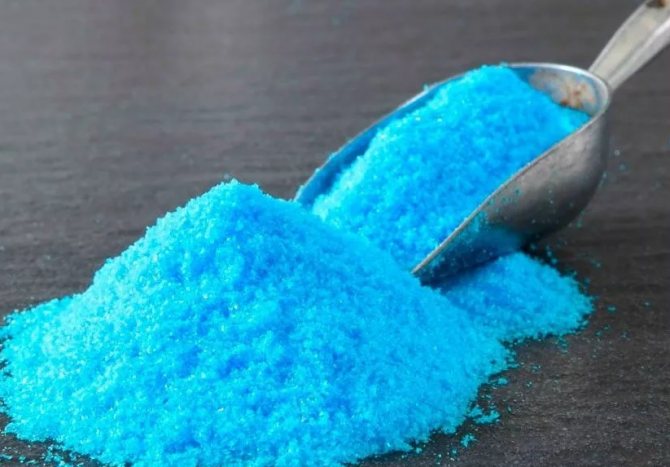

Treating the apple tree with fungicidal agents, which include copper sulfate, Bordeaux mixture, can help from gnawing on the bark of young deciduous trees by hares, mice. They are sprayed on the trunk, the crown of the apple tree. The drugs not only protect against pests, but also a number of fungal infections and insects. Seedlings are sprayed in dry, calm weather, in the morning or in the evening. Copper sulfate treatment can be carried out in early spring or autumn, at an air temperature of + 5 ° C. After the first frost, it is treated with a Bordeaux mixture.
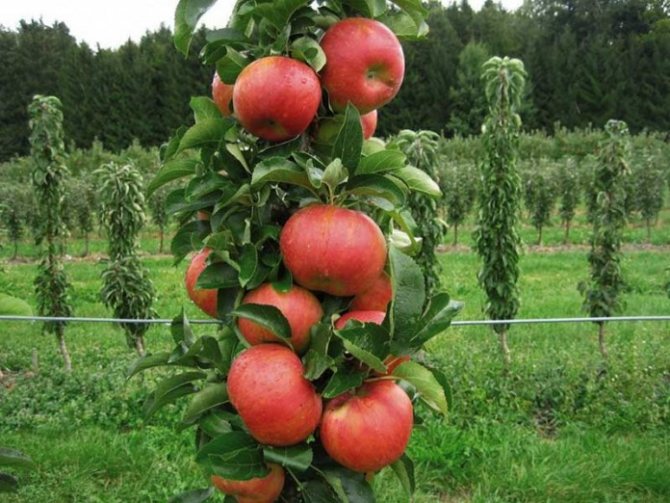

Common or European cancer
On the bark of the apple tree, deep wounds are formed with overgrown callus in the form of an influx along the edge. A closed form is observed on the branches, in which the nodules grow together, leaving a small gap.
There is also a particularly dangerous open form of this disease, which is usually found in the nodes of branches and on the trunks. Here, the wound does not overgrow, but on the contrary, it grows, reaches the wood, which begins to crumble. Dark red sporulation tubercles appear on the affected areas. Spores infect nearby branches and trees.
The branches of diseased trees dry out, the yield decreases. It has been noticed that the disease can appear even in winter at zero temperature and high humidity (which is often the case in our climate).

